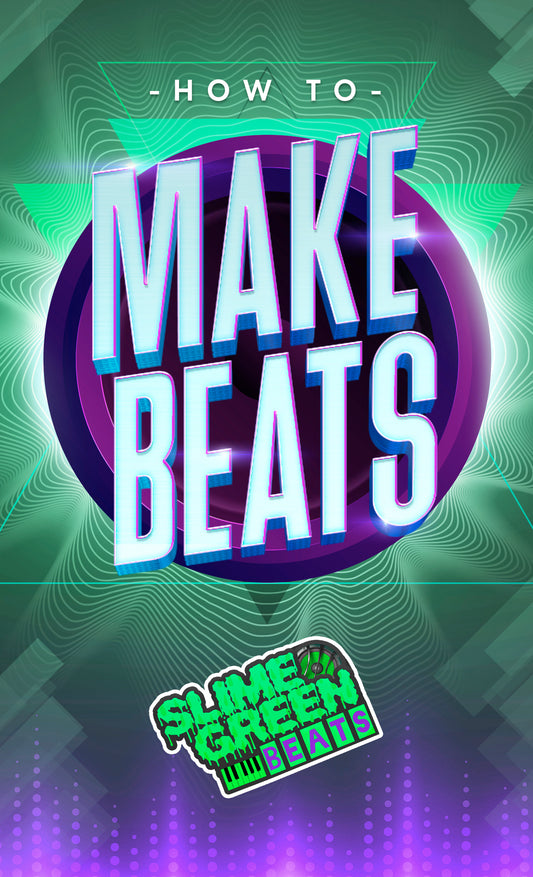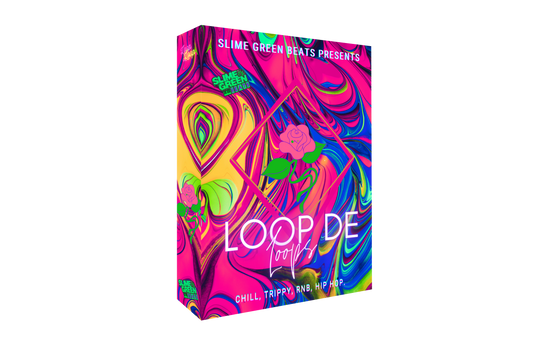Have you ever wanted to make those heart-pounding drum and bass tracks using FL Studio? Well, you're in for a treat. This guide's got everything you need to get started on your beatmaking journey. Whether you're just starting out or looking to fine-tune your skills, we've got tips and tricks for every step of the way. From setting up your workspace to crafting those killer basslines, we're covering it all. So grab your headphones, fire up FL Studio, and let's dive into the world of drum and bass.
Key Takeaways
- FL Studio is a flexible tool for drum and bass production, perfect for both beginners and pros.
- Understanding the basics of drum and bass rhythms and basslines is key to creating authentic tracks.
- Choosing the right plugins can make a big difference in your production quality.
- Experimenting with effects can add unique touches to your music.
- Mixing and mastering are crucial steps to ensure your track sounds polished and professional.
Understanding the Core Elements of Drum and Bass
Exploring the Unique Rhythms
Drum and bass, often referred to as DnB, is known for its fast-paced beats and intricate rhythms. The foundation of this genre lies in its drum patterns, which are not just fast but also complex. It's all about getting the snare right—it's the heartbeat of the track. Unlike house or trance, where the snare is secondary, in DnB, it's as vital as the kick. Hi-hats also play a significant role, adding layers and creating a textured rhythm. To keep things interesting, producers often incorporate sampled drum breaks, giving the track an organic feel.
The Role of Basslines in Drum and Bass
The bassline in drum and bass is not just a background element; it's a driving force. It complements the drums and often carries the melody of the track. When crafting a bassline, think about how it interacts with the drum patterns. The bass should groove and sync with the beats, creating a cohesive sound. Consider experimenting with different bass sounds—whether it's a deep sub-bass or a punchy mid-bass—to add variety and interest to your tracks.
Incorporating Atmospheric Elements
Atmospheric elements in drum and bass add depth and dimension. These can be anything from ambient pads to subtle sound effects that create a mood or setting. They help to fill out the sound and can transform a simple beat into a rich, immersive experience. When adding these elements, think about the emotion you want to convey and how these sounds can enhance the overall vibe of the track.
Remember, in drum and bass, every element has its place. It's about finding the right balance between rhythm, bass, and atmosphere to create a track that not only moves the body but also the mind. Embrace the chaos and let your creativity flow, but always keep the groove in sight.
For those interested in exploring the various styles within the genre, from liquid to jump up, there's a world of sound waiting to be discovered. Each subgenre offers its own unique take on the drum and bass formula, providing endless opportunities for experimentation and innovation.
Setting Up Your FL Studio for Drum and Bass
Optimizing Your Workspace for Creativity
Arranging your FL Studio workspace is like setting the stage for your musical performance. Start by organizing the Channel Rack, Mixer, and Playlist in a way that feels intuitive. A well-organized workspace can significantly boost your creativity. Here’s a simple setup to get you started:
- Place the Channel Rack on the left for easy access to your instruments and samples.
- Position the Mixer in the center so you can quickly adjust levels and add effects.
- Keep the Playlist on the right to arrange your patterns into a cohesive track.
Don’t forget to tweak your audio settings. Choose the right soundcard or audio interface to avoid latency issues and ensure the best sound quality.
Remember, your workspace is your creative sanctuary. Customize it to suit your workflow, and you’ll find that ideas flow more naturally.
Essential Plugins for Drum and Bass
Plugins are the secret ingredients to crafting a killer drum and bass track. Here are a few must-haves:
- Harmor: Perfect for creating those gritty basslines and complex sound textures.
- Fruity Parametric EQ 2: Essential for shaping your sound and carving out space in the mix.
- Gross Beat: Ideal for adding rhythmic effects and stutters to your beats.
Experiment with these plugins and discover how they can transform your tracks from basic to breathtaking.
Customizing Your FL Studio Layout
Customizing your FL Studio layout can make a world of difference in how you produce music. Adjust the layout to fit your personal workflow:
- Organize Your Plugins: Keep your favorite plugins within easy reach to save time.
- Use Templates: Set up templates for different types of projects so you can dive right into the creative process without setting up everything from scratch.
- Create Shortcuts: Customize keyboard shortcuts to speed up your workflow.
These small adjustments can make your production process smoother and more enjoyable. It’s all about creating a space where you feel comfortable and inspired to make music.
Crafting Powerful Drum Patterns
Creating drum patterns that captivate listeners is an art in itself. It's about mixing the right elements to make your track stand out. Let's dive into the essentials of crafting those powerful drum patterns that make Drum and Bass so electrifying.
Creating Syncopated Rhythms
Syncopation is your friend when it comes to making rhythms that are anything but ordinary. It breaks the monotony and injects energy into your tracks. Here's how you can master it:
- Experiment with Off-Beats: Play around with placing hits on unexpected beats to create a groove that surprises the listener.
- Vary the Velocity: Adjust the volume of each hit to add a human touch, making your pattern feel alive.
- Use fills and rolls to break up repetitive sections and add excitement.
Remember, the best drum patterns balance repetition with variation. It's about finding the sweet spot where the groove feels familiar yet fresh.
Layering Drum Samples for Impact
Layering is the secret sauce for making your drums punchy and powerful. It's all about combining different samples to create a fuller sound.
- Start with a solid kick drum and layer it with another sample that complements its frequency.
- Layer snares with claps or rim shots to add depth and texture.
- Use EQ and compression to balance the elements and ensure they sit well together.
Using Automation for Dynamic Beats
Automation can bring your drum patterns to life by adding movement and variation. Here’s how you can use it effectively:
- Automate the volume and panning of your drum hits to create a sense of movement.
- Use filter automation to add interest and variation over time.
- Try automating effects like reverb and delay to make your beats more dynamic.
For those looking to take their drum mixing to the next level, check out How to Mix Beats by Slime Green Beats for some killer tips and tricks. This guide is packed with insights that can help you craft standout beats in no time.
Designing Basslines That Groove

Selecting the Right Bass Sounds
Choosing the right bass sound is where it all begins. Whether you're aiming for a sustained sub-bass or a punchy, rhythmic edge, your choice will set the tone for your entire track. FL Studio's Boo Bass is a great starting point, offering deep, resonant tones that fit perfectly within the drum and bass genre. Consider the mood you want to create:
- Sustained Sub-Bass: Ideal for deep, rolling vibes.
- Punchy Bass: Adds a sharp, rhythmic edge.
- Synth Bass: Offers versatility and creativity.
Remember, the bass sound you choose will be the backbone of your track, so take the time to experiment and find the one that resonates with your vision.
Programming Bass Patterns
Once you've nailed down your sound, it's time to start programming your bass patterns. Open the Piano Roll in FL Studio and begin sketching out a simple MIDI pattern. Don't shy away from experimenting with note lengths and velocities to add character. A compelling bass pattern often includes quick jumps in notes and octave shifts to keep things interesting. Here's a simple process:
- Open the Piano Roll.
- Sketch a simple MIDI pattern.
- Experiment with note lengths and velocities.
Boldly play around with these elements, and you'll find the sweet spot that makes your track groove.
Syncing Bass with Drum Patterns
The magic happens when your bassline syncs perfectly with the drums. Start by aligning your bass notes with the kick drum to create a tight, cohesive groove. Listen for any clashes and adjust as needed. A well-synced bass and drum pattern can make your track irresistible.
- Align bass notes with the kick.
- Listen for clashes and adjust.
- Create a cohesive groove.
Crafting a groove is like painting a picture; each note is a brushstroke that adds to the overall masterpiece.
With these steps, your bassline will not just support your track but elevate it to the next level. Dive in, experiment, and let your creativity shine!
Enhancing Your Tracks with Effects
Using Reverb and Delay for Depth
Adding effects to your music is like sprinkling magic dust over your beats. Reverb and delay are your best friends when it comes to creating depth and space. Reverb can make your sounds feel like they're bouncing around in a cathedral or a small room, depending on your settings. Delay, on the other hand, can add echoes that make your track feel more alive. Here are some quick tips:
- Reverb Tips: Experiment with different reverb sizes to see how they change the feel of your track. Use shorter reverbs for tighter, more intimate sounds and longer ones for a more expansive feel.
- Delay Tips: Try syncopating your delays to add a rhythmic element that complements your beats. Play around with feedback settings to create evolving echoes.
Applying EQ and Compression
EQ and compression are essential tools for shaping your sound. EQ helps you carve out space for each element in your mix, while compression controls the dynamics, making sure everything sits well together. Here's how to use them effectively:
- EQ Tips: Focus on cutting frequencies rather than boosting them to create clarity. Identify overlapping frequencies that cause muddiness and reduce them.
- Compression Tips: Use compression to tame peaks and bring up quieter parts. Set a slower attack to let transients through for punchier sounds.
Experimenting with Sound Design
Sound design is where you can get really creative. It allows you to change parameters over time, adding interest and movement to your track. Think of it as your secret weapon for making your music dynamic. Here are some ideas to get you started:
- Automate filter sweeps to create build-ups and breakdowns.
- Use volume automation to create fades and swells.
- Experiment with automating effects parameters like reverb size or delay feedback.
When you start playing around with effects, remember there's no right or wrong. It's all about what sounds good to you and fits the vibe you're going for. Effects can turn a plain track into something that really stands out. So, don't be afraid to tweak and twist those knobs until you find your sound!
For more on enhancing your creative process, consider exploring Fugatto's AI music generator, which lets you experiment with various styles and instruments.
Mixing and Mastering Your Drum and Bass Tracks

Balancing Levels and Frequencies
Getting the balance right in your mix is like finding the sweet spot in a recipe. Each ingredient, or in this case, each sound, needs to be just right. Start by setting your levels so that every element has its own space. Make sure your kick drum is punchy but not overpowering. Use EQ to carve out space for each instrument, ensuring they fit together like a well-crafted puzzle. Compression is your ally here, helping to even out the volume and make sure nothing gets lost.
- Start with a strong mix: Each part should sound good on its own.
- Use EQ to boost or cut frequencies for clarity.
- Apply compression to maintain a balanced sound.
Mixing is like painting a picture with sound. Every brushstroke matters, and sometimes less is more.
Finalizing the Mix for Clarity
Once your mix is balanced, it's time to add some magic. Reverb and delay can give your track depth, but don't overdo it—subtlety is key. Use automation to keep things dynamic, like having your synths swell in the chorus or letting the drums drop out for a dramatic effect. And always test your mix on different speakers and headphones to ensure it translates well everywhere.
- Apply reverb and delay for space and depth.
- Use automation for dynamic changes.
- Test your mix on various playback systems.
Mastering for Different Listening Platforms
Mastering is the final polish that makes your track sound great on any device, from club speakers to earbuds. Adjust the final EQ, compression, and limiting to suit the medium. For instance, a track meant for Spotify might need different tweaks than one for vinyl. Use reference tracks to guide your mastering process, and don't hesitate to get a fresh pair of ears if needed.
- Master for the specific platform: Spotify, vinyl, etc.
- Compare your track with professionally mastered ones.
- Consider professional mastering for a fresh perspective.
Mastering is the last step in your music-making journey, where all your hard work comes together. It's about making your track shine, no matter where it's played.
Taking Your Beatmaking to the Next Level
Got the basics down? Awesome. Now, let's shake things up a bit. Think about adding some unexpected twists to your tracks. You might start with reversing some samples or trying out granular synthesis. Ever heard of polyrhythms? They can add a whole new layer to your music. It’s all about creating something that stands out.
Consider adding live instruments to your beats. A sax riff or a funky guitar line can bring a fresh vibe. And don't forget to keep an eye on new plugins and software updates. They often come with tools that could inspire your next big idea.
Teaming up with other musicians can be a game-changer. Find someone whose work you admire and see if they’re up for a collab. It’s a great way to learn new techniques and get a fresh perspective on your own work. Plus, it’s a fantastic way to network within the music scene.
You might find that a small tweak suggested by a collaborator can change the entire vibe of a track for the better. It's all about learning and growing together.
The journey of mastering beatmaking never really ends. There's always something new to learn, whether it's a new software update, a fresh plugin, or a unique technique you've never tried. Stay curious and keep pushing your boundaries.
- Stay Updated: Regularly check out tutorials and courses online. Platforms like YouTube are full of free educational content.
- Join Communities: Engage with other producers online. Forums and social media groups can offer support, feedback, and inspiration.
- Practice Consistently: Set aside time each day or week to work on your craft. Consistent practice is key to improvement.
Remember, every track you make is a step forward, even if it doesn't turn out perfectly. Keep experimenting, keep learning, and most importantly, keep having fun with it.
For more insights into mastering FL Studio beatmaking, especially for pop music, consider diving into comprehensive guides that cover everything from drum patterns to sound selection. This can be a great way to refine your skills and discover new techniques.
Ready to take your beatmaking skills up a notch? Dive into our collection of top-quality beats that can help you create amazing music. Don’t wait—visit our website now to explore and find the perfect sound for your next project!
Conclusion
Alright, so there you have it! Getting the hang of FL Studio for drum and bass beatmaking is like learning to ride a bike. At first, it might feel a bit wobbly, but once you find your balance, it's smooth sailing. From laying down that first kick to tweaking the final mix, each step is a chance to let your creativity shine. Remember, it's not just about the tools or the techniques; it's about the joy of making something that's all yours. Keep experimenting, stay curious, and most importantly, have fun with it. Who knows? Your next beat might just be the one that gets everyone moving. Happy beatmaking!
Frequently Asked Questions
What is FL Studio and why is it popular for making drum and bass music?
FL Studio is a music-making software that's easy to use, which makes it a favorite for creating drum and bass tracks.
How do I start making beats in FL Studio?
First, set up your workspace, learn the basics, and explore the Channel Rack to begin crafting your beats.
What are some tips for creating a strong drum beat?
Pick the right kick drum, layer percussion sounds, and create dynamic drum patterns for a solid beat.
How can I make my bassline fit well with my drums?
Choose the right bass sounds, program bass patterns, and sync them with your drum beats for a cohesive sound.
What effects should I use to enhance my track?
Use reverb and delay for depth, EQ and compression for balance, and try automation for interesting effects.
What's important when mixing and mastering a track?
Balance levels and frequencies, finalize the mix, and master the track for different listening platforms.








